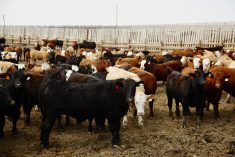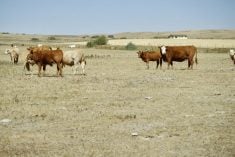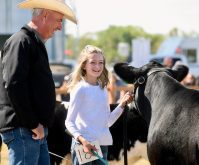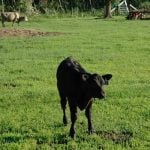Bale grazing not only helps keep cows fat and sassy over the winter, but can also improve areas with low fertility and reduce yardage costs.
Research studies in Saskatchewan and Alberta have found higher forage production on bale-grazed sites than control sites with no bale grazing, the Beef Cattle Research Council notes in Extended Grazing, a fact sheet available at beefresearch.ca.
But bale grazing needs to be managed right to avoid hot spots of concentrated nutrients from urine and manure, the council adds.
Read Also
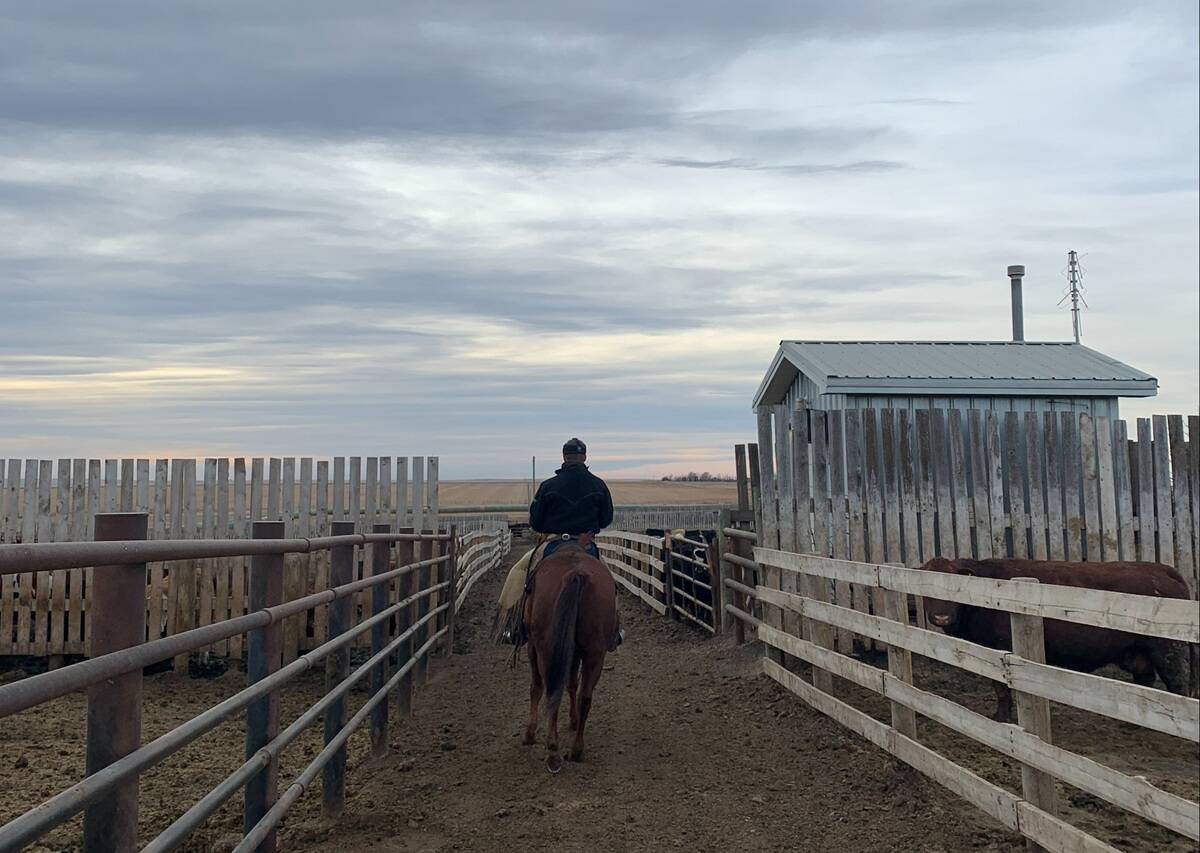
Pen riders still better than tech at detecting respiratory disease in feedlot cattle, says researcher
Recent research found that pen riders are better than tech at flagging signs of BRD in feedlot cattle
For example, producers generally ration feed to cattle by moving an electric fence. Feeding period length and feed quality affect feed wastage. The council notes that feeding periods longer than two to five days tend to create more waste.
The Beef Cattle Research Council offers the following suggestions when deciding where to bale graze:
- Avoid bale grazing in riparian areas, sites where run-off will flow directly into surface water, on high water tables, on sandy soil or other environmentally sensitive areas.
- Also avoid native pastures, as you may introduce weeds or change the environment so it’s less favourable to native species.
- Seeded perennial fields are the best option.
- Leave extra biomass on the site to reduce mud.
The right density also prevents excessive nutrients. The council suggests a maximum density of 800 cow days/per acre, which works out to about 25 bales per acre, depending on the bale weight. Leaving 30 to 35 feet between each bale will allow animals to move easily between bales and encourage uniform manure coverage. The council suggests using a grid with 40-foot centres when placing bales. Don’t place bales on the same grid in subsequent years and rotate bale grazing sites (the council suggest a five-year rotation). Testing soil annually will alert producers to any nutrient buildup.
Bales with sisal twine can be placed on their sides, as the twine will rot. However, plastic twine will have to be cut, collected and removed to keep the less-discerning cows from consuming it. The council suggests setting these bales on their ends and removing the plastic twine before winter sets in.
For more information on bale grazing and other extended grazing options, visit beefresearch.ca and search “extended grazing.”





